View current page
...more recent posts
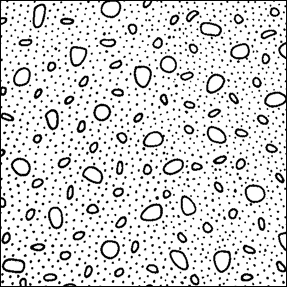
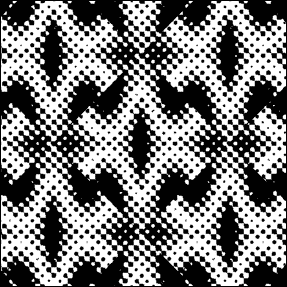
Before MacPaint incorporated black & white, so-called infinite fill patterns into home computer graphics, most already existed and were used by design firms, newspaper paste-up departments, and cartoonists for shading camera-ready art. Manufactured as adhesive sheets, they were (and still are by some) cut out with X-acto knives and mounted on illustration board. Zipatone was the company cartoonists swore by; it's now defunct but Letraset has a mind-boggling array of fill patterns viewable (and/or downloadable) online.
Transfer Graphics - Letratone (physical media - comes printed on sheets of adhesive film)
Dot TintsPhototone Imagery - Textures & Tones - Single Downloads
Geographical & Architectural
Dots & Grids
Mezzotints
Miscellaneous
Excerpt from today's Daily Howler:
YOU’LL SEE IT [IN THE HOWLER] AND NOWHERE ELSE: “By any measure of his votes,” [Tucker] Carlson said [on CNN], Kerry is “the most liberal member of the Senate.” When GOP hacks say that Kerry and Edwards are first and fourth most liberal senators, they are citing a survey from National Journal. But on March 6, that very same Journal—explicitly responding to this misleading claim—published its list of current senators with the most liberal lifetime voting records. Here it is—the Journal’s Top Ten. Guess whose names aren’t on it?
National Journal: Most liberal senators, lifetime voting
1. Mark Dayton, D-Minn.
2. Paul Sarbanes, D-Md.
3. Jack Reed, D-R.I.
4. Jon Corzine, D-N.J.
5. Edward Kennedy, D-Mass.
6. Barbara Boxer, D-Calif.
7. Tom Harkin, D-Iowa
8. Richard Durbin, D-Ill.
9. Frank Lautenberg, D-N.J.
10. Patrick Leahy, D-Vt
In case anyone quotes you this absurd RNC spin point, here's some ammo. --ed.
UPDATE: Obviously Kerry's not a liberal, now he's saying he would have invaded Iraq even without WMDs. What a putz; anything to get elected, I guess.
Coalition and Iraqi civilian casualty links added to column at left. (Who's tracking insurgent deaths? Aren't the "civilian" numbers increasingly fluid as more and more Iraqis take up arms?) Number of US soldiers killed in Iraq to date: 929. Number of coalition soldiers killed: 1052. Number of US soldiers killed since August 1, 2004: 17. Iraqi civilians killed: 11429 - 13398. All thanks to George W. Bush, who fails in everything he does, and is now taking innocents along with him.
There's been quite a bit of ruminating on various artblogs about "the role of criticism" recently, but the topic remains frustratingly vague since specific examples are avoided. As a case study--surprise, surprise--let's look at the critical reasoning behind the "Infinite Fill Show" (which we've been discussing here lately), as articulated in the exhibition materials and the New York Times review of the show.
Press release/call for entries theory: "The only rule is that [work submitted] has to somehow use black and white repeating patterns" (from the call for entries). "The curatorial concept was inspired by [MacPaint], the 1984 software application with varied 16-bit monochrome patterning that could be picked and dropped into areas of the screen to denote color and depth. For Cory and Jamie Arcangel, this rudimentary precursor to Photoshop's draw and paint functions provides a creative tool to explore multiple perspectives within a unifying aesthetic." (from the press release)
The "nostalgia factor" associated with old programs I addressed in an earlier post. Still worth considering are (a) how did pattern substitute for color and depth in MacPaint, exactly? are "bricks" a color? who came up with those patterns? how well did/do they work in actual practice? to what extent were artistic prerogatives usurped by engineering prerogatives? (b) MacPaint is a precursor to Photoshop, which is pixel-based, but how does it relate to vector programs such as Illustrator, which use defined curves rather than rectangular blocks? If the show is a form of ancestor-worship, whose family is being feted? are pixel-based programs more "important" because they've been subsumed into html and web design? (c) to what extent was MacPaint old news, incorporating pre-1984 print conventions such as Ben Day dot patterns (also frequently alluded to in "Infinite Fill"), zipatone, or letratone?
New York Times theory (i.e., everything but the purely descriptive parts of the review): (1) "How many different ways can a work of art combine black, white and repetition? An answer is essayed by 'The Infinite Fill Group Show...'" (2) "The show is intended as a homage to [MacPaint], an early computer application (released in 1984) that enabled the user to click and drag a range of black-and-white patterns into images of any kind." (3) "[T]he show resembles a photo-negative of the floor-to-ceiling, color-saturated conventions of the so-called 'bedroom shows,' those showcases for collaboratively minded young artists that reached an apotheosis of sorts in Dearraindrop's extravaganza at Deitch Projects in SoHo..."
The "youth culture" and "psychedelia/color saturation" issues were raised here earlier. Perhaps "Infinite Fill" was also a "photo-negative" (inversion) of the teenager's bedroom shows because if included artists of all ages? What was the kid-to-geezer ratio? Does it matter? Item (1) slightly restates the show's premise (as a way of saying how diverse it is): but did each work in the show in fact use B&W and repetition? (No.) Black & white schemes are sometimes used by curators (not naming any names) to unify group shows of quite disparate work but disguise the lack of a thesis. Is that the case here? (No!--but why?) Does the fact that MacPaint was monochrome and used fill patterns justify the inclusion of works such as needlepoints, enlarged newsprint images, and zebra rugs? How is the political work in the show justified by a formal premise? Is the premise "merely formal"? The Times doesn't answer these questions with specitic examples (and neither have I in this short post); unless or until someone does so, a gap between theory and description remains unfilled.
Returning to the point raised in my first sentence, I submit that the "role of the critic" is to answer questions and plug gaps such as the above. (Not holding my breath, though.) As long as there is work to be done you don't sit around bemoaning what you're supposed to do.
UPDATE: This post has been reworked a bit to take into account the wording of the Arcangels' call for entries. I also added the links about historic fill patterns (zipatone, letratone).
The "Infinite Fill Show" gets the lead review in the New York Times today (page E32 of the print edition). Critic Roberta Smith says the exhibit, with its all-black and white color scheme, resembles a "photo-negative of the so-called 'bedroom shows,' those [floor-to-ceiling, color saturated] showcases for collaboratively minded young artists that reached an apotheosis of sorts in Dearraindrop's extravaganza at Deitch Projects..." After that, the review is pretty descriptive; she concludes by noting the show is an homage to "Mac Paint (sic)." It's a glowing write-up (for this non-effusive critic), and congratulations all around, but Smith really ought to read blogs more. If she did, she'd know that Jamie Arcangel is female. Pretty funny--she describes "Infinite Fill"'s organizers as "the artists and brothers Cory and Jamie Arcangel."
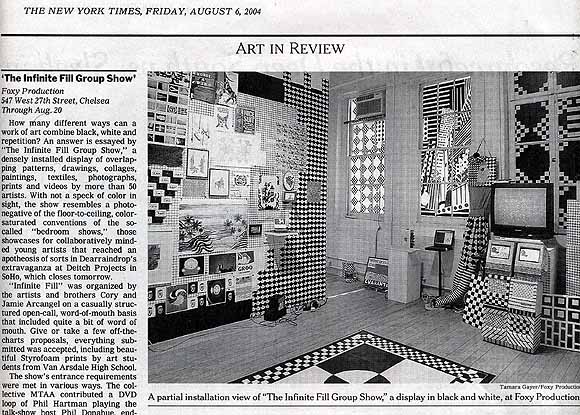
Below: Zoms Zoms at Boogaloo bar in S. Willliamsburg, August 5, 2004. High-energy hardcore synthpop trio from Austin, with a heavy art/noise component. Surprisingly rocking. Songs are short and got the crowd going: I imagined an A&R guy hanging around, thinking, "Great, great, how can we ruin this?"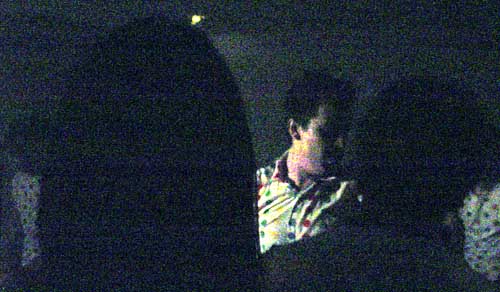 Although the band expressed concern that the sound mix submerged the singer in these "vocally driven" songs, I liked the prominence given the guitar, which I noticed less on the recorded songs I've heard: an orgiastic, Beefheart-Henry Kaiser jangle balancing out the fast metronomic beats and synth woops. The band has .mp3s on websites here (myspace.com) and here (main site). "Static" and "TV" are recommended. |
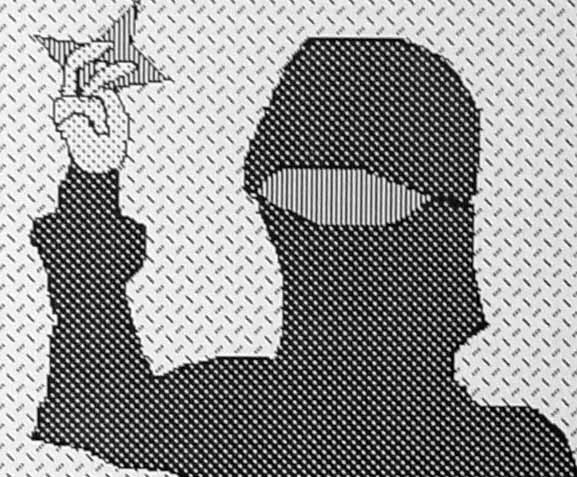
More work from the "Infinite Fill Show." Above: Kevin McGarry, NIN.gif (detail). In the lower part of this image, not shown here, the ninja is carrying a scythe like the Grim Reaper--is this some game character I don't know about?
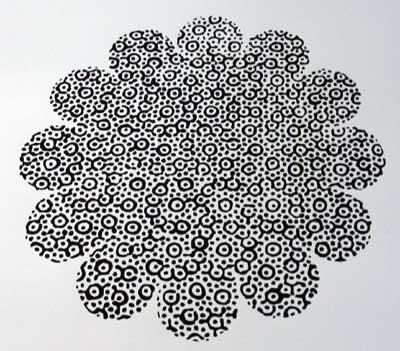
Louisa Minkin, Blindspot (detail of watercolor).
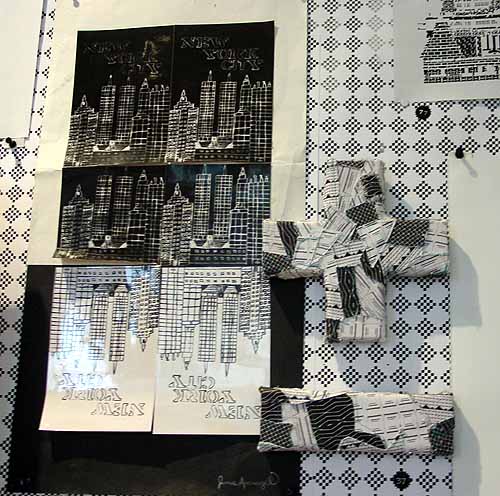
Jamie Arcangel did the New York City collage (in high school) and LoVid the patchwork plus and minus.
I just posted the comment below on the Agonist comment board, in response to editor Sean-Paul Kelley's report on a recent Fahrenheit 9/11 panel in San Antonio. "Where Moore went overboard is to suggest that Bush's family's financial ties to the Saudis were in any way a factor in the President's decision to go to war in Iraq," Kelley quotes Jan Jarboe-Russell, who he describes as "thoughtful and even-handed" and "known for her progressive stance on issues," despite the fact that "neither the [San Antonio Express-News] nor Texas Monthly, two publications she writes for, are beacons of the Left."
My comment:
I wasn't left with the impression that was what Moore was saying; maybe he did and I just discounted it, unlike the "liberal" who is making such a big deal of it. The "Saudi connection" part of the film gives a quite plausible reason why the Bushies were asleep at the switch on 9/11 and then sought to cover it up afterward. The Iraq part of the film mentions the standard reasons for the invasion--WMDs, "terrorist" activity, oil. I think it takes work to conflate the two parts of the film into "the Saudis wanted us to invade Iraq." The closest line I could find in the transcript is "I wonder if Mr. Bush told Prince Bandar not to worry because he already had a plan in motion"--which suggests Bush had a way of diverting attention from the Saudi connection and meeting some other Administration goals, not that Prince Bandar was a "factor" in the decision. Why do so-called liberals work so hard to undermine this movie?
